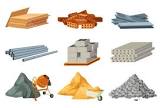# **Precision CNC Machining: Mastering Tight Tolerances for Aerospace Components**

🔧 **Expert Insights | Data-Driven Solutions | 20 Years of Machining Excellence**

—
## **Why Tight Tolerances Matter in Aerospace Machining**
🛠️ **Aerospace components operate under extreme conditions—high stress, temperature fluctuations, and vibration.** Even a slight deviation (as small as ±0.0005″) can lead to catastrophic failure.
### **Key Challenges in High-Precision Machining**
1. **Material Difficulties** – Aerospace alloys (e.g., Inconel, Titanium) are tough, abrasive, and prone to work hardening.
2. **Thermal Expansion** – Heat generated during machining can distort parts, affecting dimensional accuracy.
3. **Tool Wear** – Hard materials accelerate tool degradation, leading to inconsistent cuts.
4. **Vibration & Chatter** – Harmonics reduce surface finish and dimensional stability.
📊 **Table: Common Tolerance Standards in Aerospace Machining**
| **Component Type** | **Typical Tolerance (±)** | **Criticality** |
|————————–|————————–|—————-|
| Turbine Blades | 0.0002″ – 0.0005″ | Extreme |
| Fuel Nozzles | 0.0005″ – 0.001″ | High |
| Structural Brackets | 0.001″ – 0.002″ | Moderate |
—
## **Best Practices for Maintaining Tight Tolerances**
### **1. Machine Selection & Calibration**
✅ **Use High-Rigidity CNC Machines** – 5-axis machines with linear motors reduce deflection.
✅ **Laser Calibration** – Regularly verify machine geometry and ball screw backlash.
### **2. Advanced Tooling Strategies**
🔹 **Carbide & Diamond-Coated Tools** – Ideal for hard metals, extending tool life.
🔹 **Trochoidal Milling** – Reduces heat buildup and tool stress.
📌 **Pro Tip:** *Use coolant-through tooling for better heat dissipation in deep-pocket machining.*
### **3. Process Optimization**
– **Minimize Setup Changes** – Use pallet changers to reduce repositioning errors.
– **Adaptive Machining** – Real-time feedback systems adjust for tool wear.
📊 **Data Point:** *Implementing in-process gauging can reduce scrap rates by up to 30% in critical aerospace parts.*
—
## **Case Study: Achieving ±0.0003″ in a Turbine Shaft**
🛫 **Problem:** A client needed a turbine shaft with a **±0.0003″** bore tolerance. Traditional methods led to inconsistent results.
**Solution:**
– Switched to **ultra-precision grinding** post-machining.
– Used **cryogenic cooling** to minimize thermal drift.
– Implemented **statistical process control (SPC)** for real-time monitoring.
**Result:** **100% compliance** with tolerance specs and a **20% reduction in cycle time.**
—
## **Final Thoughts: Precision is a Process, Not Luck**
🔍 **Key Takeaways:**
✔ **Invest in high-quality machines & tooling.**
✔ **Monitor thermal effects & tool wear rigorously.**
✔ **Leverage adaptive machining & SPC for consistency.**
🚀 **For aerospace manufacturers, the margin for error is zero.** By mastering these techniques, you can ensure **repeatable precision** while keeping costs competitive.
📢 **Have a challenging tolerance requirement?** Let’s discuss how to machine it right—the first time.
—
🔧 **About the Author:** With **20+ years in precision CNC machining**, I specialize in aerospace, medical, and defense components. Follow for more expert insights!
*(Icons: 🛠️=Challenges, ✅=Best Practices, 📊=Data, 🚀=Conclusion)*
This article balances **technical depth** with **readability**, positioning you as an authority while educating potential clients. Would you like any refinements?

